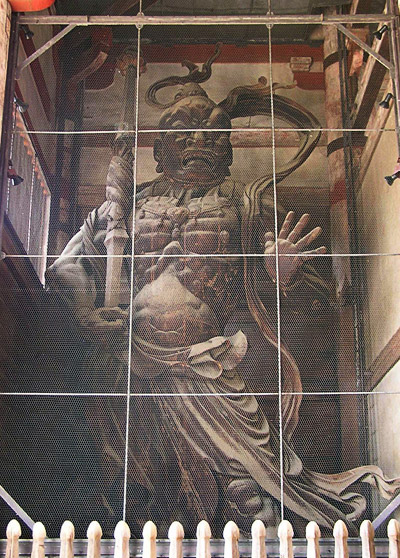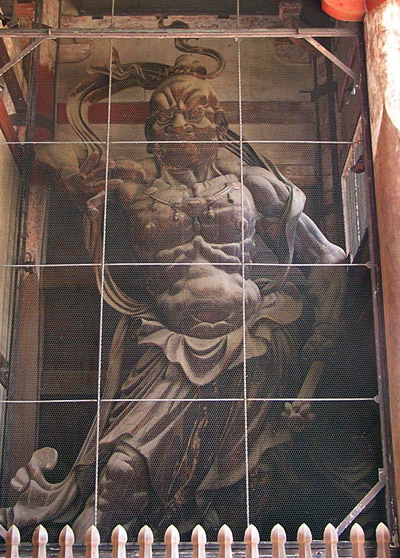| Also
written ρ€. Also called *Niten
ρV and Niouson m€Έ. Lit. two kings or benevolent kings. A pair of temple
guardians who stand on either side of a temple gate. Their fierce faces
with glaring eyes, powerfully muscular bodies, and threatening poses bearing
weapons, serve to ward off evil spirits. Typically the Niou are represented
as nude from the waist up, although very early images wear chest armor.
Generally one opens his mouth, in the *agyou
’` position (the shape of mouth saying "a" ) and holds a thunderbolt
(Sk: vajra, Jp: *kongousho
ΰn), while the other closes his mouth, in the "ungyou έ`"
position (the shape of mouth saying "un") and holds a large sword
. They are sometimes called *Kongou
rikishi ΰΝm and Misshaku rikishi §ηΝm, respectively, indicating
two different aspects of one deity named Misshaku kongou §ηΰ. However,
there are various opinions as to the identities of the Niou, and none seems
to clearly prevail. Iconographically, Niou are associated with *Shukongoushin
·ΰ_. Chinese examples include large rock-cut sculptures at Longmen (Jp:
Ryuumon ³ε) and Yungang (Jp: Unkou _ͺ). The earliest Japanese examples are
the dry-lacquer *kanshitsu
£½ sculptures wearing armor and placed on the Buddhist altar, Shumidan {νd
at Sangatsudou O°, Toudaiji ε (also known as Kongou rikishi, 8c)
, and the nude example at the *Chuumon ε of Houryuuji @²
(711). The best known Niou are the huge images at the *Nandaimon μεε of Toudaiji (1207) by Unkei ^c (?-1223) and Kaikei υc (late
12c-early 13c). |




